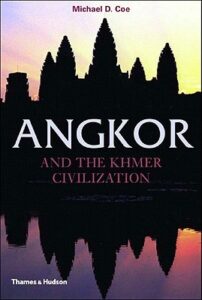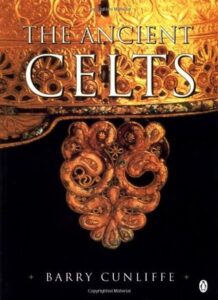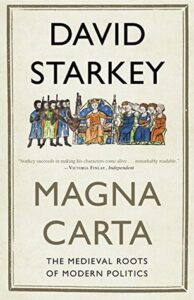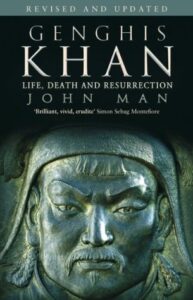Posted December 6, 2018 by Nicky in Reviews / 0 Comments
 Pax Romana, Adrian Goldsworthy
Pax Romana, Adrian Goldsworthy
Pax Romana is a popular history style examination of the peace imposed by the Roman Empire, and how peaceful it actually was, as well as how it benefitted or oppressed the lands and peoples that fell under Roman sway. Although I called it popular history, it’s not super popularised: the evidence is meticulous, and the pace slow. It’s popular history in the sense of being perfectly comprehensible to the interested outsider to the field, rather than being simplistic.
The overall theory of the book is that the Pax Romana really was, in general, beneficial — and that Rome’s rule really was relatively peaceful and benign, with exceptions being just that rather than the overall rule. A lot of the time the evidence suggests that benignity was due to basically ignoring local squabbles and leaving places to govern themselves with minimal interference, while the legions only marched in for serious matters.
How far do I agree with Goldsworthy’s views, based on the evidence presented? Well, he definitely makes a good case for it, though I think he takes the long view to a great degree and I think there were likely people within the Roman Empire who felt oppressed by it, as well as people who were relatively unaffected by it. I do agree with his view that the Roman Empire wasn’t ruled simply through brutality: it certainly wouldn’t have had the longevity it did, if that were the sole basis, and it wouldn’t have been something people actively wanted to be part of — and it was something people wanted to be part of, more often than not.
It’s definitely a worthwhile look at whether the Roman Empire is really so degenerate as its painted.
Rating: 4/5
Tags: book reviews, books, history, non-fiction
Posted November 29, 2018 by Nicky in Reviews / 4 Comments
 Unearthing the Dragon, Mark Norell
Unearthing the Dragon, Mark Norell
Ostensibly about the discovery of feathered dinosaurs and the science surrounding them, this book also contains a fair amount of male-gazey exoticisation of China. It’s full of photographs — more photographs and images than text sometimes — and a large amount of both photos and text is about China. Modern China, that is: the culture Norell ran into when working there, his nights out, his visits to markets, his thoughts on the people, and the shapely feet of young Chinese women. Seriously!
There are some nuggets of useful information in here about feathered dinosaurs, and some gorgeous pictures both of modern China and of dinosaur fossils, but I would honestly skip it. There’s something very gross about the way he treats China and particularly Chinese women: like some kind of tourist attraction.
Rating: 2/5
Tags: book reviews, books, non-fiction
Posted November 20, 2018 by Nicky in Reviews / 0 Comments
 Angkor and the Khmer Civilisation, Michael D. Coe
Angkor and the Khmer Civilisation, Michael D. Coe
One of the complaints in reviews about this book seems to be that it reads like a textbook. It does: if you’re looking for something more casual, a tourist’s guide, then I’m sure there are books out there, but this isn’t it. It’s a scholarly consideration of the ruins of Angkor, the way the Khmer civilisation developed and the context in which it did so. It is illustrated with photographs and drawings, but it’s not a coffee table book for sure.
It can be a bit slow going, but there’s plenty of interest, to my mind. It’s better than the other book I read on Ankor, which was rather focused on this and that ruined building, and this and that inscription: there’s more of a sense of a people behind the monuments, in this book, which was welcome. It’s still slow going, but fascinating all the same for me.
Rating: 3/5
Tags: book reviews, books, history, non-fiction
Posted November 9, 2018 by Nicky in Reviews / 0 Comments
 The Ancient Celts, Barry Cunliffe
The Ancient Celts, Barry Cunliffe
This book is a gorgeous object, lavishly illustrated with photographs of Celtic artefacts and finds. The book was written by a well-known expert in the field, and I have no doubt of his credentials or his accuracy in laying out what we know and the interpretations that can be drawn (fairly cautiously) from that. This certainly isn’t the kind of book that looks at the mythology about the Celtic peoples written by the Romans and swallows it whole; Cunliffe bases the book on all kinds of different evidence, drawing it together to provide a picture of the groups of people one could confidently consider part of the same Celtic race.
The only problem is that something about Cunliffe’s style sends me to sleep. It’s not that I doubt that he’s fascinated by the subject matter, but he doesn’t communicate a good sense of that enthusiasm, to my mind — there are writers who can make the minutiae really speak even to a layperson, and there are those who can’t. Cunliffe is rather the latter. It’s still an excellent resource about the Celtic peoples, but it wasn’t the best for light reading by a curious outsider to the field.
Rating: 3/5
Tags: book reviews, books, history, non-fiction
Posted November 4, 2018 by Nicky in Reviews / 0 Comments
 Magna Carta, David Starkey
Magna Carta, David Starkey
This was a fairly basic survey of what the Magna Carta was, how it came about, and what it means to us now. I won’t say it didn’t tell me anything I didn’t know, because it does go into a bit of the back-and-forth and negotiations about what the Magna Carta actually contained and why, but it felt very slight. The subtitle of this book is “The Medieval Roots of Modern Politics”, and I didn’t think it really dug into that very much at all, in fact.
So not a bad book, but not exactly a deep dive either. Readable, but. Shrug.
Rating: 2/5
Tags: book reviews, books, history, non-fiction
Posted October 30, 2018 by Nicky in Reviews / 2 Comments
 The Incas, Craig Morris, Adriana Van Hagen
The Incas, Craig Morris, Adriana Van Hagen
In comparison to Michael D. Coe’s book on the Maya, this one really made me feel like I was getting to know a people and their customs. It’s no less broad in scope, and no less richly illustrated with diagrams, reproductions and photographs. It feels like it’s more about the people, though, giving an idea of the customs of the Incan Empire. I’d never known about the mitmaq before, for example — the groups of people the Inca resettled in or from troublesome areas in order to calm them down.
I’m sure I didn’t retain half the information that I read here, of course, but that’s beside the point for me. I gained an impression of the people and the period, with some idea of the complexities and customs, and I felt that the writers were as fascinated by it all as any tourist — just to a greater depth. This is one non-fiction book where I did find myself wanting to share what I’d learned and talk about it, and maybe read more.
So yeah, this one’s a good one.
Rating: 4/5
Tags: book reviews, books, history, non-fiction
Posted October 25, 2018 by Nicky in Reviews / 2 Comments
 The Maya, Michael D. Coe, Stephen D. Houston
The Maya, Michael D. Coe, Stephen D. Houston
There’s no denying that Michael Coe is one of the foremost scholars of the Mayan world, and that this is known for being a prime text to introduce people to the Mayan world in an academic sense (rather than a frivolous ‘clearly they were inspired by aliens’ or other such conspiracy theory sense). The volume is beautifully illustrated with photographs and diagrams, and Coe and Houston are painstakingly clear in explaining the lie of the land, the boundaries of Maya influence, the history of the places that contributed to their development as a cohesive people, and the broad reach of their civilisation.
But. There was something dry about this — and though you might be inclined to put that down to this being non-fiction, I read a very similar book on the Incas just a little later and found it riveting. Even the dullest details of stone placed upon stone can be livened up by an understanding of the people, and I didn’t really find that here. I’ve also got Coe’s book on deciphering the Mayan script, and I’m hoping that brings things to life a little more.
The sign of a good non-fiction book, for me, is that I have an endless store of things to share about it at the end. Coe and Houston’s book didn’t get there, for me. It’s still a great primer if you want to go deeper into understanding the Maya, and it’s worth looking at for the collection of images alone, but… it’s not the most entertaining book I’ve ever brought home from the library.
Rating: 3/5
Tags: book reviews, books, history, non-fiction
Posted October 21, 2018 by Nicky in Reviews / 0 Comments
 Alpha Beta, John Man
Alpha Beta, John Man
John Man is good at a certain kind of popular history book, as I’ve noted before. There are often elements of travelogue, and it’s usually a very easy read, with quite short chapters and not too many long quotations from sources or anything like that. It’s not the most rigorous scholarship in the world, but it’s a good way to get a handle on a subject and get an initial idea of whether you’re interested in reading more. Sometimes there are interesting titbits about newer scholarship that might be a bit more controversial — you catch the drift.
Alpha Beta, then, is Man’s take on the alphabet. Other people have mentioned expecting that he’d just discuss each letter in turn and where we picked it up from, but Man is somewhat more ambitious: he’s after the origin of the Roman alphabet as we know it, and more generally the origin of writing as a form of expression. He has some very interesting points, including about Korea’s hyper-rational alphabet that is designed to be ideal for writing down the language. (Though I do wonder if that will stick after a few centuries of use and language change.)
He has a whole bit on the influence of the alphabet on monotheism that made surprisingly little impact on me and I only remembered when checking over the Amazon reviews to refresh my mind to write this — although actually, I think what he wrote was more the other way round, that monotheism had an impact on the emergence of the alphabet, because he wrote about how useful it can be for an emerging social group to adopt an alphabet. The Mongols (a pet topic of his, clearly, since he’s written books on Genghis and Kublai Khan, etc) were also an example in that context.
Overall, it’s an interesting if not exactly exhaustive read.
Rating: 3/5
Tags: book reviews, books, history, non-fiction
Posted October 16, 2018 by Nicky in Reviews / 2 Comments
 Genghis Khan: Life, Death and Resurrection, John Man
Genghis Khan: Life, Death and Resurrection, John Man
John Man writes good, light, easy to read pop history. I have no illusions that I’m reading about the latest cutting edge discoveries, or that I’m getting a deep critical look at all the possible sources… but a story is woven together that illuminates a bit of history, with a touch of the travelogue as well. I know that it annoys other readers that Man also writes about his experiences while writing a book — where he went for research, the almost-calamities experienced, etc, etc. Still, for a bit of light reading I don’t mind, and it’s certainly easier to digest than something more academic.
Genghis Khan himself is a fascinating subject: the name is so evocative, yet really all it conjured up for me was tent villages and conquest. I didn’t really have a good idea of the Mongol peoples and their context, except dimly refracted through fiction. And well, okay, John Man gives us little snippets of “faction” (as is his wont), but it is based on research and an understanding of what was likely.
So yeah, enjoyable and accessible. I wouldn’t use it as a source for something that needs scrupulous accuracy, but if you’re curious, it should be a good read.
Rating: 3/5
Tags: book reviews, books, history, non-fiction
Posted October 15, 2018 by Nicky in Reviews / 0 Comments
 Endless Forms Most Beautiful, Sean Carroll
Endless Forms Most Beautiful, Sean Carroll
At this point, I must admit I’m a bad judge of pop-science when it covers biology. To me this is a very easy read now, covering simple topics, but I know I wouldn’t have felt that way a couple of years ago. If you’re interested in evolutionary biology, though, this is a very good primer on the science of Evo Devo: understanding evolutionary relationships through understanding the development of embryos, how certain genes work in causing large morphological differences even though almost the same gene can be found in a wildly different species.
I think if you have a reasonable understanding of genetics and how proteins are made, you should be okay here: it’s not requiring expertise, though it may take concentration to follow some of the reasoning if you’re not already familiar. If you are, it illustrates the principles nicely, and I imagine a full colour copy of the book (if it exists) would be rather physically gorgeous as well. There’s a lot of black-and-white images of butterfly wings, for instance, in my particular edition. The points could probably have been more clearly demonstrated with colour images where the differences are easier to highlight…
All the same, a fascinating book, whether you’re an expert or not (I think). Evo Devo is a bit of a buzzword for some biologists lately, and this book is worth the read for learning about that. I wish I’d read it before the module I did that included some of this stuff: it would have definitely made the learning part come easier!
Rating: 4/5
Tags: book reviews, books, non-fiction, science
 Pax Romana, Adrian Goldsworthy
Pax Romana, Adrian Goldsworthy








